SUMMARY
Overview
streaming heritage 2022 | Between the Plateaus and the Sea
Statement
There are numerous cultural heritages and tourism resources along the edges of the Nagoya Plateau and Atsuta Plateau. From Nagoya Castle, going through Nayabashi to Miya no Watashi, and then to Port of Nagoya, the flow of the Horikawa River is a “stream” connecting these heritages in a line. streaming heritage uses contemporary art to highlight this flow, streaming Nagoya’s historical and cultural heritage in real-time. Taking a train from Nagoya Castle and tracing this flow upstream will take you to Seto, a major production center for ceramics.
Meanwhile, the program also highlights the continuous recreation of the trends in digital media culture rooted in this same area—between the plateau and the sea—in the manufacturing capital that is Nagoya, beginning with the World Design Expo and its venues at Nagoya Castle, Shirotori Garden, and Port of Nagoya, and continuing with the International Biennale in Nagoya—ARTEC, artport/MEDIASELECT, International Symposium on Electronic Art (ISEA), VISUALOGUE International Council of Graphic Design Associations (Icograda) and resulting in membership of the UNESCO Creative Cities Network.
This event is intended to show the world the charms of Nagoya’s unique cultural arts, creating an interaction between history and the present through installations by well-known artists, talk events featuring experts and creators, and performances using cutting-edge technology, and so lead to a revitalization of social and economic activity.
Dates
November 3rd (Thu)-November 20th (Sun), 2022
*Held on Friday, Saturday, Sunday and National holiday during this period.
Venues + Hours
Nagoya Castle (Ofuke-maru, Nishi-no-maru)
9:00-16:30
*Nagoya Castle admission fees requiredShikemichi (Ito Historic Residence, Esplanade Gallery)
11:00-19:00
*The Eexhibition at Esplanade Gallery is on display only for three days from November 11th to 13thNayabashi Bridge (Siam’s Garden)
sunset-20:00Matsushige Koumon [Lock Gate] (Nakagawa Unga Gallery)
11:00-19:00Atsuta/Miya no Watashi (Miya no Watashi Park)
*Only for one day on November 20th
Organizer
Nagoya, Japan Cultural Expo Executive Committee
- [Members]
- City of Nagoya
Nagoya, UNESCO City of Design Organizing Committee
Nagoya Urban Development Public Corporation
Nagoya Chamber of Commerce & Industry
Chunichi Shimbun Co., Ltd.
Support
the Agency for Cultural Affairs, Government of Japan, Fiscal Year 2022
Cooperation
Esplanade Gallery, NISSHA FOUNDATION, Siam Garden, Taisetsu Mokko Co., Ltd., Deakin University (AUS), Institute of Advanced Media Arts and Sciences [IAMAS], Meijo University, Nagoya University of Arts and Sciences
Contact
Secretariat of Nagoya, UNESCO City of Design Organizing Committee
Culture and Art Promotion Division, Bureau of Tourism, Culture & Exchange
City of Nagoya
1-1 Sannomaru, 3-chome, Naka-ku, Nagoya, Aichi Prefecture 460-8508
Tel: +81-52-972-3172
Fax: +81-52-972-4128
Background
[“Media Consciousness” = Awareness on Media]
streaming heritage (Recreating Heritage) has its background in the concept of “media consciousness.” Media are intermediaries, that is, “things that connect something to something else” and being aware of these media is “media consciousness.” Well, then, why is that important?
[Horikawa River Itself as Medium]
It is because the Horikawa River is the medium that connects Nagoya Castle and the port, and this medium itself constitutes the origin of the city of Nagoya. Being aware of the Horikawa River is the first step in recreating Nagoya’s history and its charm.
[Recreation Via Media Art]
“Why media art?” There is also an answer to this question. It is because media art is indeed art that is aware of its distance from the media. It makes us conscious of and lets us perceive the various media that, in melding into our lives, have thus become invisible. That is one of the roles of media art.
[Recreating Another Heritage = Building a Media-Conscious Archive]
streaming heritage also aims to recreate another heritage involving the link between Nagoya Castle and the Port of Nagoya, namely the heritage of media design and media art. In archiving the continuous history from the World Design Expo in 1989 up to the present day, we will recreate the flow of/trends in design and art rooted in this city of manufacturing.
Organization
Director
-
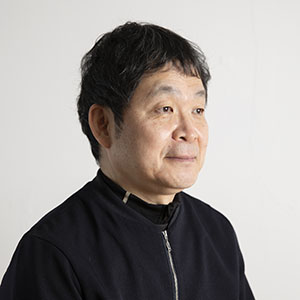
Akiba Fuminori
-
Professor at the Graduate School of Informatics, Nagoya University, specializes in aesthetics and theory of arts (Doctor of Letters). His books include Happiness of Paintings: On Tomoaki Shitara (Misuzu Shobo 2020) and Creating New Aesthetics (Misuzu Shobo 2011). Co-authored Encyclopedia of Aesthetics (Maruzen 2020), Encyclopedia of Artificial Intelligence (Kyoritsu Shuppan 2017), Semiotics of Food (edited by the Japanese Association for Semiotic Studies, Shinyosha 2020) and Artificial Intelligence Art and Aesthetics Exhibition (Artificial Intelligence Art and Aesthetics Research Group, 2019). Translations include Richard Shusterman’s Pragmatist Aesthetics (Keiso Shobo 1999). He is a member of the Japanese Society for Aesthetics, the Japanese Association for Semiotic Studies and the Tactileology Association Japan.
-
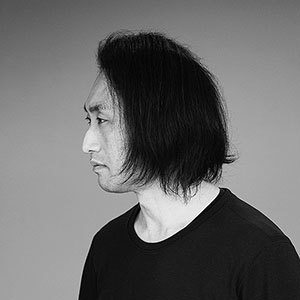
Fushiki Kei
-
Creating intermedia performance on the subject of a boundary between linearity and non-linearity on time consciousness. Also approaching media installation works from the aspect of spatial uniqueness such as the historical background of the place. 2006-08, Awarded a DAAD scholarship and stayed in Germany, completion of MFA degree at the Bauhaus University Weimar.
Present, Professor at Nagoya University of Arts and Sciences. -
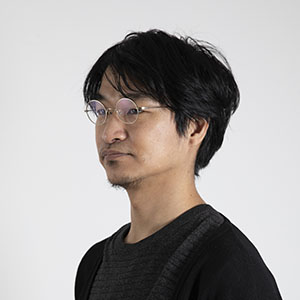
Kawamura Yosuke
-
Creates interactive works using information media and plans workshops.
In recent years, he has been involved in many projects, and in the mobile lab project “MOBIUM” that he has been presiding over since 2005, he plans “shoboshobo 2005”, “MOBIUM TOUR 2019 moving laboratory”, “TOYOTA HACK CAMP” and so on.
At “NODE-Lab”, which has been presided over since 2011, the workshop program “WORKSHOP SHOW CASE” and the Japan-Korea exchange project “CONSONARE” are planned.
At the Aichi Triennale 2016, he was the project leader of the participatory work production project “Locus Faber Tsukulocca”. -
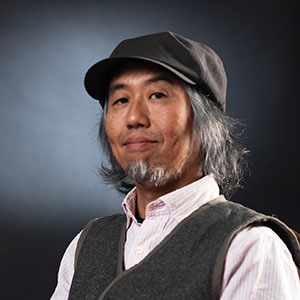
Yamada Ko
-
1964 Born and raised in Japan. Ohio University (BFA and MFA in photography)
Representative of PACell and Chojamachi School of Arts. He combined photography with sound installations, book projects, newspaper projects and performances. His artworks and projects are widely exhibited internationally.
1994[Reflected Identity ] Houston International FOTOFEST(U.S.), 1995 [IDENTIDADE REFLETIDA]Sao Paulo 2ndInternational Photo Meeting(Brazil), 1998[MEDIALOGUE] Tokyo Photographic Art Museum(Japan), 2008 [Specimen of Good-byes] Singapore International Photography Festival(Singapore), 2016 [Specimen of Good-byes] FOTORAMA06 (Serbia), [Greater Aichi Naruheso Newspaper]Aichi Triennale (Japan), 2017[coucou,Je suis revenue]Saint-Etienne International Design Festival(France), 2019 [A Double Helix of Kinsey] Graz Design Month (Austria), 2019-present [ART FARMing & ART FARMing TV] project representative.
Program Director
-
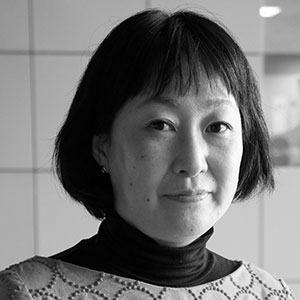
Esaka Eriko
-
Eriko Esaka is a program director of the UNESCO Creative Cities Network (category of design) in the city of Nagoya. She is responsible for the planning and operation of events such as international workshops for young designers, design forums, and exhibitions.
In the new project entitled “Nagoya, Japan Cultural Expo ‘streaming heritage 2021 spring,’” Director Esaka fosters interaction between the historical and contemporary elements of art, design, and technology, and conveys the appeal of unique urban culture and art to the world.
Thereby she strives to assist in the revitalization of socio-economic activities.
Main Visual
-
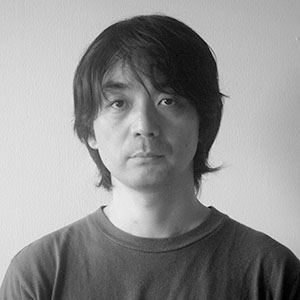
Hattori Kazunari
-
Born in Tokyo in 1964. Graduated from Tokyo University of the Arts in 1988 with a degree in Design. In that year, he joined Light Publicity Co., Ltd. Since 2001, he has worked as an independent graphic designer. Major Works: Advertisement Director for the Kewpie Corporation and East Japan Railway Company. Conducted art direction for magazines “Mayonaka,” “Ryuko Tsushin,” and “here and there.” Designed logos and visual identities for the Mitsubishi Ichigokan Museum, Tokyo, Niigata City Museum, and Hirosaki Museum of Contemporary Art. Designed book covers for dictionaries, including the “PETIT ROYAL French-Japanese Dictionary,” all published by Obunsha Co., Ltd. Major Awards: Mainichi Design Award, Tokyo ADC Award, Yusaku Kamekura Design Award, and Tokyo TDC Grand Prix.
Advisor
-
Takenaka Katsuyuki
-
Geography, Professor of Aichi Prefectural University
-
Motoyama Kiyofumi
-
Visual Culture, Professor of Nagoya University of the Arts
History Research (Media Consciousness)
-
Yoshikawa Ryo
-
Assistant Professor of Nagoya Bunri University
Production Team
Website
Ishii Yoshihiro (temple)
Map
[Illustration] Clemens Metzler
[Graphic design] Nagao Norihisa
Nagoyaka Pavilion
Taisetsu Mokko Co. × Meijo University
[Graphic design] Koizumi Makoto
Video
Fushiki Kei + Tenderworks
Photo
Yamada Ko
Nagoya, Japan Cultural Expo Executive Committee
Secretariat
Amari Ayu
Kuroda Chikako
Ito Masami
Meguro Mizuki
Nakashima Fumie
Ochiai Momoka
Ohno Kohki
Public Relations
Ichikawa Yasuko (iroiro)






